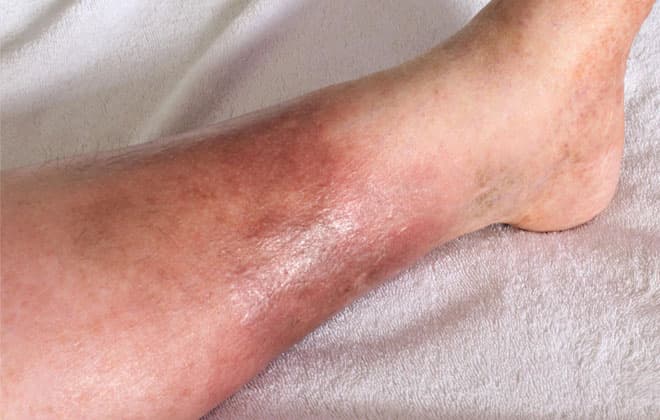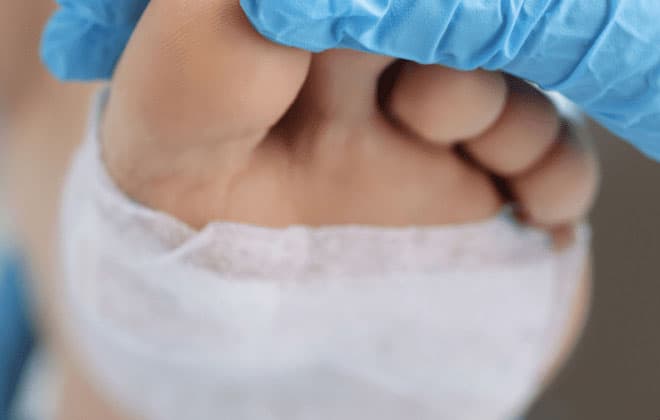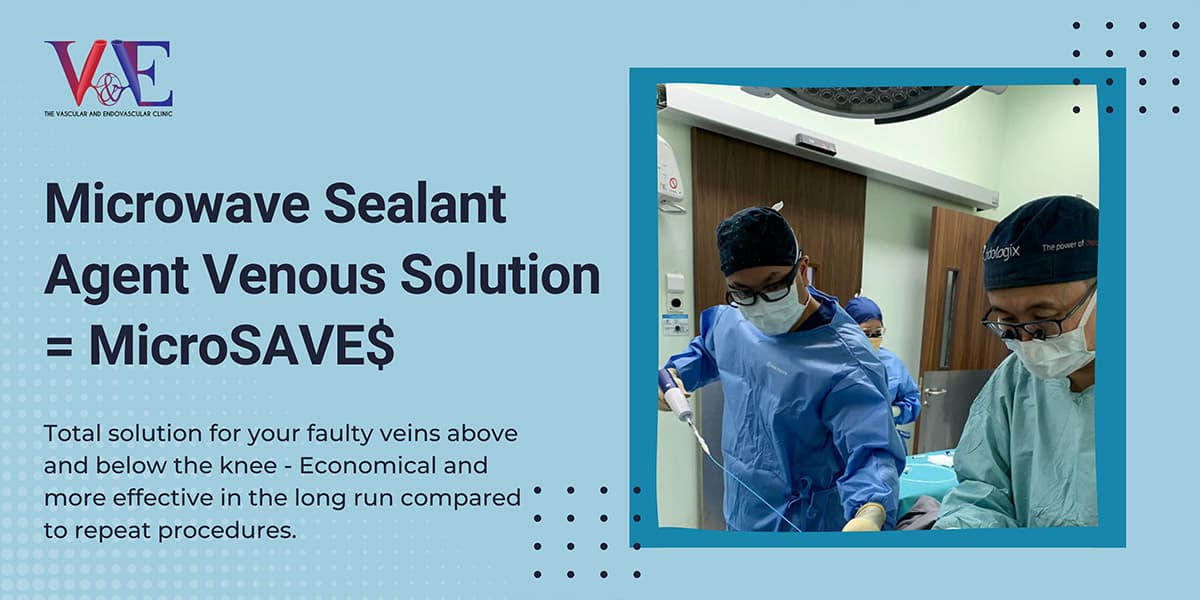Evidence-based treatment
Conditions
Vascular is a term used to describe any blood vessel conditions or treatment related to the human body. Endovascular actually means keyhole method for treating blood vessel conditions as opposed to open major surgery. The Vascular and Endovascular Clinic offers comprehensive treatment from open surgery to minimal invasive surgery (endovascular).


Aortic Diseases
Aortic aneurysm can form in any part of the vessel. However, the most common location is inside the tummy below the kidneys (infra-renal aortic aneurysm).

Cellulitis
Cellulitis is a bacterial skin infection that affects the deeper layers of the skin and subcutaneous tissues. It most commonly occurs in the legs but can also occur in other areas of the body. The infection can cause redness, swelling, warmth, and pain in the affected area.

Cerebrovascular Disease
The blood flow to the brain is supplied by four main arteries to different areas inside and when the blood vessels burst or is blocked, a stroke may happen immediately.

Chronic Wounds
Chronic wounds are wounds that do not progress through a normal, orderly, and timely sequence of repair. Wounds that do not heal within three months are often considered chronic in nature.

Deep Vein Thrombosis
DVT is a condition in which blood clots are formed, commonly in the veins in the legs or pelvis. It can also occur in the arm if there is a compression syndrome of the major draining vein of the arm.

Diabetic Foot
Diabetic foot complications arise as a result of blocked blood vessels, changes in sensation to detect infection and injury, alteration of foot arch muscles support and reduced ability to fight off infections.

Dialysis Access Creation
You may already know that before you can receive dialysis, you need to have an access placed. Your dialysis access is your lifeline and a critical factor in enabling you to obtain the best dialysis treatment possible.

Erectile Dysfunction
Erectile dysfunction (ED) is defined as recurrent inability to attain or maintain penile erection sufficient for sexual satisfaction. ED affects 40 % of man over 40 years old. It is also a marker of cardiovascular disease and happens in 75% of diabetics in their life time.

Fibroids
Fibroids are noncancerous growths that develop in or around the uterus. They are also known as uterine fibroids or leiomyomas. Fibroids are made up of muscle and fibrous tissue and can vary in size.

Genicular Artery Embolization
Genicular artery embolization is a minimally invasive procedure that targets the genicular arteries, which are responsible for supplying blood to the knee joint. By reducing the blood flow to the knee, the procedure aims to alleviate chronic knee pain.

Pelvic Congestion Syndrome
Pelvic congestion syndrome (PCS), otherwise known as pelvic venous disease, is a condition under-diagnosed in women and is one of the causes of chronic pelvic pain unrelated to the menstrual cycle and pregnancy.

Peripheral Arteriovenous Malformations (AVMs)
A peripheral arteriovenous malformation is a type of AVM that occurs outside of the brain or spinal cord. It is a rare condition where there is an abnormal, direct connection between arteries and veins, bypassing the capillary system.

Peripheral Artery Disease
PAD is a common circulatory problem in which narrowed arteries reduce blood flow to your legs and feet. When you develop PAD, your legs do not receive enough blood flow to keep up with the demand especially during exercise.

Popliteal Entrapment And Chronic Compartment Syndromes
Popliteal entrapment syndrome is a rare condition in which the popliteal artery, which supplies blood to the lower leg and foot, is compressed or squeezed by nearby structures, such as the muscles and tendons at the back of the knee.

Pulmonary Embolism
A pulmonary embolism (PE) is a blockage in one of the pulmonary arteries in the lungs, typically caused by blood clots that travel to the lungs from the legs or other parts of the body (a condition known as deep vein thrombosis, or DVT). This blockage can restrict blood flow to the lung tissue, leading to various symptoms and potentially serious complications.

Varicocoeles
A varicocele is an enlargement of the veins within the loose bag of skin that holds your testicles (scrotum). It’s similar to a varicose vein you might see on your leg. Varicoceles are a common cause of low sperm production and decreased sperm quality, which can cause infertility.

Varicose Veins
Chronic venous insufficiency (CVI) is a common condition that occurs when the wall and/ or the valves of the veins in your legs do not work properly, making it difficult for blood to return efficiently from the legs back to the heart.

Spider Veins And Vascular Skin Lesions
Once the faulty truncal vein below the skin is ablated using the latest range of devices such as laser, RFA, microwave, ClariVein, or glue, we can address the smaller and broken veins on the skin surface that may cause you cosmetic concerns. This can be treated using the newest laser (Candela from the Candela Corporation, US) at our Mount Elizabeth Orchard Clinic.
Frequently-Asked Questions
Just about anyone can get vein diseases, although ageing is one of the factors that contribute to the risk. As we age, our veins are more likely to bulge and swell, but those factors are not just limited to age; family history and genetics also play a role.
People whose daily routine involves a lot of standing or sitting for long periods of time also have an increased risk of developing blood flow problems. If you’re looking for a vascular surgeon to help shed some light on your worries, make an appointment with us today.
Absolutely. Though some vascular and endovascular treatments involve open surgery, newer methods are gradually shifting away from the traditional procedures that typically call for invasive procedures. Some of the well-known non-invasive treatments for varicose veins are sclerotherapy, phlebectomy, and ablation. Which of these treatments would suit you most would depend on your diagnosis from your vascular surgeon in Singapore.
Vascular diseases are any kind of disease that affects the blood circulation in your body. Veins, arteries and lymphs all make up the blood circulatory system and disruptions to any of these would result in vascular complications.
Vascular disease is an umbrella term for many other conditions, mainly venous diseases, blood clots, vasculitis, and peripheral artery disease. There are many more, and it would be best to consult with your vascular surgeon in Singapore if you suspect you might have a vascular disease.
Spider veins, referred to as thread veins, are thin red, blue or purple lines that create branches or webs visible underneath the skin. They form as a result of veins having difficulty pumping blood back to the heart and are often painless.
Although some people may choose to get treatment for cosmetic purposes, spider veins can be a symptom of venous insufficiency and over time may worsen if you don’t go for a vein screening. Visit your nearest vascular clinic if spider veins are a cause of concern.

meet our doctors
Fellowship-Trained Specialists
Senior Vascular & General Surgeon
MBChB, FRCS(Glas), FRCS(Eng), FRCS(Gen), FAMS
Senior Vascular & General Surgeon
MA Honours, MB BChir (Distinction in Surgery), MRCS Glas, MD (Cambridge), FRCS (Gen); FAMS; CWSP
Senior Vascular & General Surgeon
MDCM (McGill University); American Board of Surgery (General, Vascular); FAMS; RPVI
Media Spotlight












